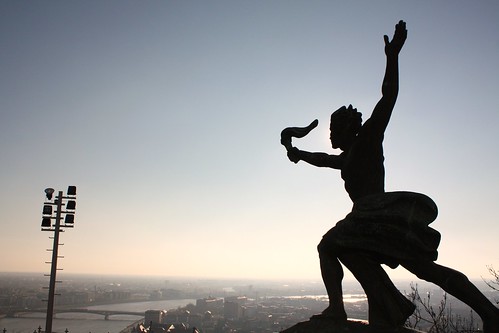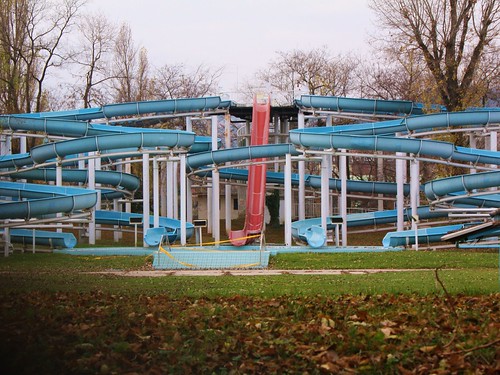
There is something definitive, I think, about the gusts of pastry glaze and fag smoke that emit, at pavement level, from underpasses and metro stations here. Budapest, however, does also come in other flavours.
Before this week, we had yet to really breach Buda further than atmospheric transport interchange, Moskva Ter, largely due to the gargantuan, though no less atmospheric, Mammut Mall, which draws us in, every time, from square's northern edge. (You might call us Mall Conneisseurs: we've visited three of the largest in the Budapest metropolitan area already, each time, as if on a whim, by accident, 'oh look where we are!').

On Monday, however, we scaled - no - scrambled - no - tramped up the Gellért Hill to the Citadella then over, via Deli Station (where in 2006 we missed the airport bus and endured a hair-raising and wrenchingly-expensive early morning taxi drive to Balaton Airport) and the Mom Park Mall (ouch, caught!) to the Roszadomb. In the Buda Hills, the city does a brackish, lemon yellow, stucco'd thing rather well. These suburbs are famously bourgeoise, positively chi chi, an enclave of residential confections strung over the hill that's named after the flowers that dervish poet Gúl Baba, entombed nearby, is credited with introducing to the city.

Yesterday I went tramping solo on Margitsziget. This long, straggly island on the Danube has an altogether different feel. In season, it's a pastoral pleasure palace, with baths, spas, lidos, tennis courts, bike tracks and incongruous contiki-style kiosks doling out canned drinks and (utterly gross) oversized pretzels to the sweaty. In winter, most of its attractions are closed and hemmed in by wire fences or functioning undercover, to protect tennis courts and outdoor pools from rain and autumn leaves.

What's left is astonishing in its own right; modernist leisureworld architecture outcropped against skeletal trees, with the Buda Hills rising beyond on one hand and the concrete towerblocks of the Újlipótváros that line the Danube on the other.
No comments:
Post a Comment